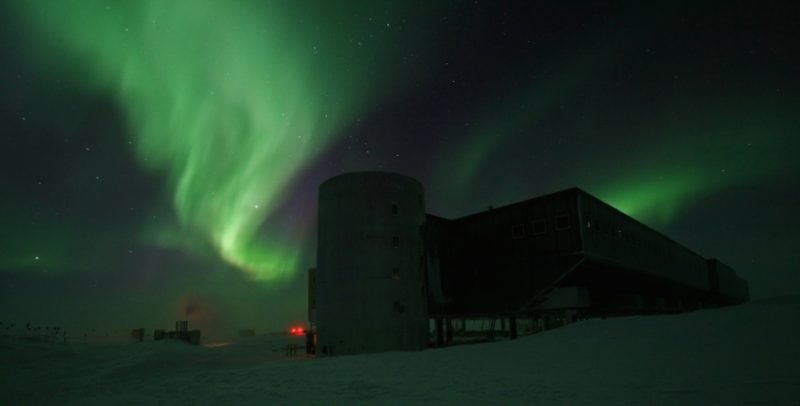21-Year-Old Lockheed Martin Satellite Providing Connectivity for Antarctic Researchers
[Via Satellite 10-12-2016] Scientists and researchers at the National Science Foundation’s (NSF’s) Amundsen-Scott Station, located at 90 degrees south on the South Pole, are using the Lockheed Martin-built Defense Satellite Communications System (DSCS) satellite DSCS-3-B7 for telecommunications services. Due to the research station’s extreme latitude, communications is difficult even for satellites. In June, the U.S. Air Force satellite took over the role of providing communication and data links between Amundsen-Scott and the U.S. Antarctic Program facility in Christchurch, New Zealand, which serves as the station’s link to the rest of the world.
DSCS-3-B7 replaces the NSF’s GOES 3 satellite, which is being decommissioned. The DSCS satellite provides the station with internet access for 3.5 hours a day at speeds of up to 30 Mbps, an upgrade from about 1.5 Mbps achieved under GOES.
Originally launched on July 31, 1995 with a 10 year-design life, DSCS-3-B7 has lived past its expectancy by 11 years. Six on-orbit DSCS 3 satellites remain operational with more than 259 years of combined service life, providing nearly 120 extra years of mission life. Lockheed Martin sustains the DSCS constellation, as well as the Advanced Extremely High Frequency (AEHF) system and Milstar blocks 1 and 2, under the Air Force’s Combined Orbital Operations Logistics Sustainment (COOLS) program.
